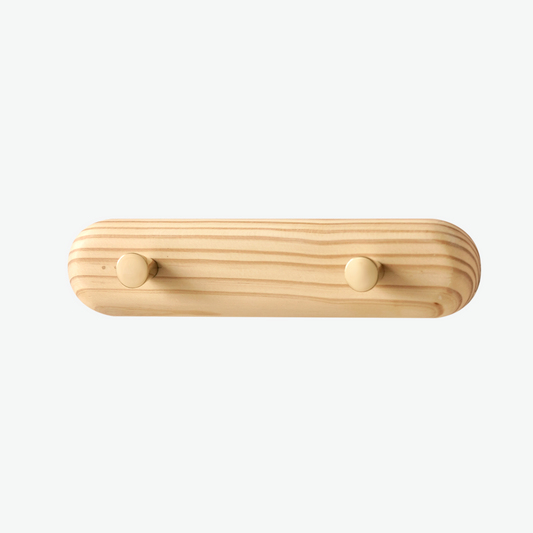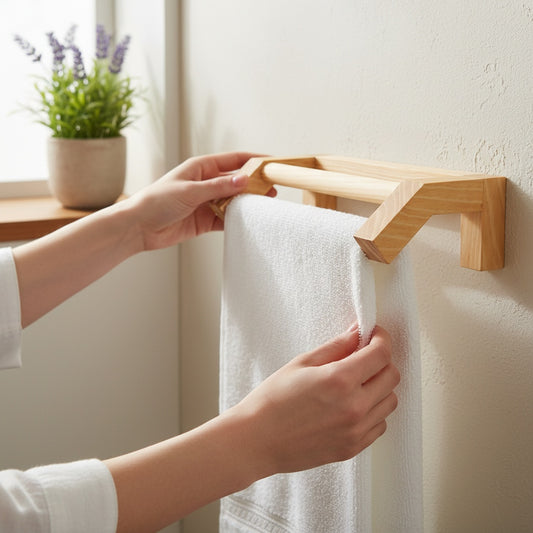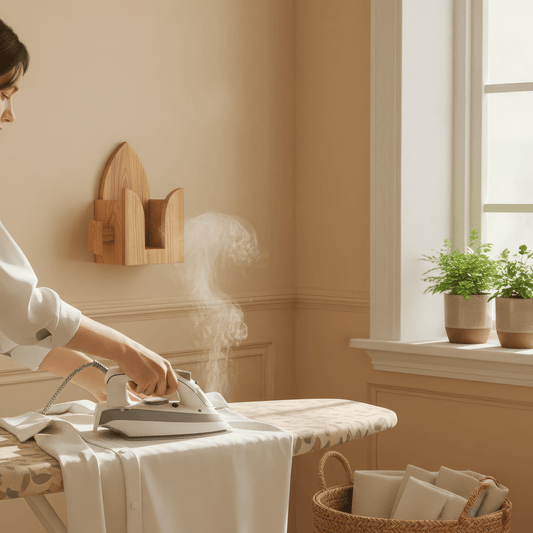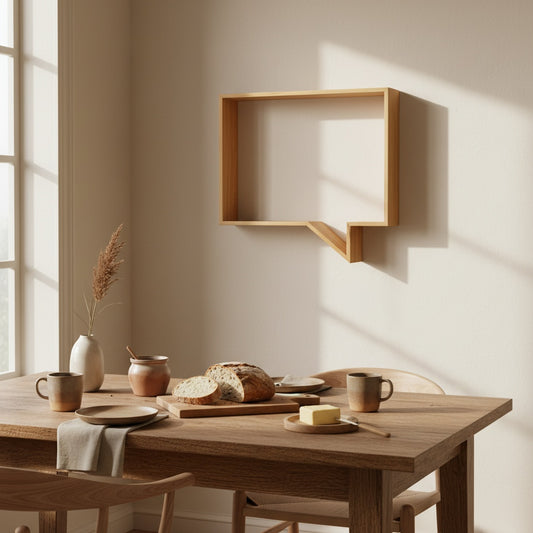The choice between reclaimed wood and new wood represents one of the most significant decisions in sustainable furniture selection, with profound implications for environmental impact, aesthetic character, and long-term value. As consumers become increasingly conscious of their environmental footprint, understanding the benefits and considerations of each option becomes crucial for making informed decisions that align with both personal values and practical needs.
At A Good Life, we've embraced both reclaimed and sustainably sourced new wood in our furniture creation, recognizing that each option offers unique advantages depending on the specific application and customer preferences. Our experience with both materials has taught us that the most sustainable choice often depends on factors beyond simple environmental impact, including longevity, functionality, and the specific story each piece of wood brings to your home.
Understanding Reclaimed Wood
Reclaimed wood refers to timber that has been salvaged from existing structures, furniture, or other applications and repurposed for new uses. This practice diverts wood from waste streams while providing materials with unique character and history.
Sources of Reclaimed Wood
Historic Buildings: Barns, warehouses, factories, and homes that are being demolished or renovated often yield high-quality reclaimed timber.
Industrial Structures: Old mills, bridges, and industrial buildings provide large-dimension timbers with exceptional character.
Transportation Infrastructure: Railroad ties, shipping pallets, and dock materials offer weather-worn wood with distinctive patina.
Previous Furniture: Antique and vintage furniture can be dismantled to provide wood for new creations.
Natural Disasters: Storm-damaged trees and structures can provide salvageable wood that would otherwise be wasted.
Characteristics of Reclaimed Wood
Unique Character: Age, weathering, and previous use create distinctive grain patterns, color variations, and surface textures impossible to replicate in new wood.
Dimensional Stability: Decades or centuries of seasoning often make reclaimed wood more stable than newly harvested timber.
Dense Grain Structure: Slow-growth conditions in older forests often produced denser, more durable wood than modern fast-growth timber.
Historical Significance: Each piece carries stories and connections to previous uses and time periods.
Patina Development: Natural aging creates beautiful color variations and surface characteristics that add visual depth.
Our Wabi-Sabi Mug Holder Pinewood Organizer celebrates the philosophy of finding beauty in imperfection, much like reclaimed wood embraces the marks and character that come with age and use. This piece demonstrates how sustainable design can honor both functionality and the natural aging process that makes each item unique.
Understanding Sustainably Sourced New Wood
New wood from sustainably managed forests offers its own set of advantages, particularly when sourced from certified sustainable forestry operations that prioritize environmental responsibility and forest regeneration.
Sustainable New Wood Sources
Certified Forests: Operations certified by FSC, PEFC, or similar organizations that ensure responsible forest management practices.
Fast-Growing Species: Trees like pine that mature quickly and can be harvested on shorter cycles without depleting forest resources.
Plantation Forests: Managed forests specifically grown for timber production, reducing pressure on natural forests.
Thinning Operations: Wood harvested during forest thinning operations that improve overall forest health.
Waste Stream Utilization: Using portions of trees that might otherwise be discarded during other harvesting operations.
Advantages of Sustainable New Wood
Predictable Quality: New wood offers consistent grain patterns, dimensions, and structural properties.
Availability: Sustainable new wood is generally more readily available than specific types of reclaimed wood.
Processing Efficiency: New wood can be processed more efficiently, often resulting in less waste during manufacturing.
Certification Verification: Sustainable certifications provide clear verification of environmental responsibility.
Carbon Sequestration: Newly harvested wood continues the carbon storage cycle while supporting forest regeneration.
Environmental Impact Comparison
Comparing the environmental impact of reclaimed versus new wood requires examining multiple factors throughout the entire lifecycle of each option.
Reclaimed Wood Environmental Benefits
Waste Diversion: Prevents wood from entering landfills or being burned, extending its useful life and carbon storage period.
Resource Conservation: Reduces demand for newly harvested timber, decreasing pressure on forest ecosystems.
Energy Savings: Often requires less processing energy than new wood, particularly when minimal refinishing is needed.
Transportation Efficiency: Local reclaimed sources can reduce transportation-related emissions.
Embodied Energy: Utilizes the energy already invested in the original wood processing and seasoning.
Sustainable New Wood Environmental Benefits
Forest Regeneration: Supports active forest management that maintains healthy, growing forests.
Carbon Cycling: Enables continuous carbon sequestration as new trees grow to replace harvested ones.
Ecosystem Management: Sustainable forestry practices support biodiversity and ecosystem health.
Renewable Resource: Properly managed forests provide renewable resources indefinitely.
Innovation Support: Market demand drives innovation in sustainable forestry practices.
For storage solutions that demonstrate sustainable new wood benefits, consider our Wooden Pallet Coasters. These pieces showcase how sustainably sourced pine can be crafted into functional items that serve daily needs while supporting responsible forestry practices.
Quality and Durability Considerations
Both reclaimed and sustainable new wood can provide exceptional quality and durability, but each presents different considerations for long-term performance.
Reclaimed Wood Quality Factors
Age Advantage: Decades or centuries of natural seasoning often create more stable wood than kiln-dried new timber.
Density Benefits: Slow-growth conditions in older forests typically produced denser, stronger wood.
Stress Relief: Long aging periods allow internal stresses to naturally resolve, reducing warping and cracking.
Proven Durability: Wood that has survived decades or centuries demonstrates exceptional longevity potential.
Unique Challenges: May require careful inspection for damage, embedded metal, or structural compromises.
New Wood Quality Factors
Consistent Properties: Predictable structural characteristics and performance specifications.
Modern Processing: Benefits from advanced kiln-drying and processing techniques that optimize stability.
Quality Control: Systematic grading and quality assurance processes ensure consistent standards.
Warranty Potential: New wood often comes with clearer warranties and performance guarantees.
Treatment Options: Can be treated for specific applications or environmental conditions as needed.
Cost Considerations
The financial implications of choosing reclaimed versus new wood extend beyond initial purchase price to include processing, maintenance, and long-term value.
Reclaimed Wood Cost Factors
Premium Pricing: Often commands higher prices due to scarcity, character, and processing requirements.
Processing Complexity: May require additional cleaning, de-nailing, and preparation work.
Yield Variability: Damage and defects can reduce usable yield, affecting cost per usable board foot.
Specialty Sourcing: Finding specific types or quantities may require specialized suppliers and higher costs.
Long-term Value: Often appreciates in value due to increasing scarcity and character appeal.
New Wood Cost Factors
Predictable Pricing: Generally more stable and predictable pricing structures.
Processing Efficiency: Standardized processing reduces labor costs and waste.
Volume Availability: Large quantities available at consistent pricing.
Transportation Costs: May involve longer shipping distances from sustainable forest sources.
Certification Premiums: Certified sustainable wood may command premium pricing over conventional alternatives.
Aesthetic and Design Considerations
The choice between reclaimed and new wood significantly impacts the aesthetic character and design possibilities of finished furniture.
Reclaimed Wood Aesthetic Advantages
Unique Character: No two pieces are identical, providing distinctive grain patterns and surface characteristics.
Patina Beauty: Natural aging creates color variations and surface textures that add visual depth and interest.
Historical Connection: Carries stories and connections to previous uses that add emotional resonance.
Authenticity: Provides genuine aged character that cannot be artificially replicated.
Conversation Pieces: Often becomes focal points that generate interest and discussion.
New Wood Aesthetic Advantages
Consistency: Uniform grain patterns and color allow for matched sets and predictable appearance.
Design Flexibility: Can be finished and treated to achieve specific aesthetic goals.
Clean Lines: Smooth, consistent surfaces support minimalist and contemporary design approaches.
Customization: Can be stained, painted, or treated to match specific design requirements.
Modern Appeal: Fresh, clean appearance that appeals to contemporary aesthetic preferences.
Practical Application Guidelines
Choosing between reclaimed and new wood often depends on the specific application and intended use of the finished furniture.
Best Applications for Reclaimed Wood
Statement Pieces: Dining tables, mantels, and other focal furniture where character is desired.
Rustic Designs: Applications where weathered, aged appearance enhances the design intent.
Historical Restoration: Projects where authenticity and historical accuracy are important.
Unique Accents: Smaller pieces where character and uniqueness are valued over consistency.
Conversation Furniture: Pieces intended to tell stories and create emotional connections.
Best Applications for New Wood
Structural Elements: Applications requiring predictable strength and performance characteristics.
Matched Sets: Furniture collections where consistency in appearance is important.
Precision Applications: Projects requiring exact dimensions and consistent properties.
High-Use Items: Furniture subjected to heavy use where predictable durability is crucial.
Modern Designs: Contemporary applications where clean, fresh appearance is desired.
Our Pine Wood Balcony Shelf demonstrates how sustainably sourced new pine can create outdoor furniture that combines durability with clean, contemporary aesthetics suitable for modern outdoor living spaces.
Making the Sustainable Choice
The most sustainable choice between reclaimed and new wood depends on multiple factors specific to each situation and application.
Decision Framework
Environmental Priorities: Consider whether waste diversion or forest regeneration support aligns better with your environmental values.
Aesthetic Preferences: Determine whether character and uniqueness or consistency and predictability better serve your design goals.
Budget Considerations: Evaluate total cost including processing, finishing, and long-term maintenance requirements.
Availability Factors: Assess the availability of suitable materials in your area and timeframe.
Longevity Goals: Consider which option will better serve your long-term furniture needs and lifestyle.
Hybrid Approaches
Many sustainable furniture makers successfully combine both reclaimed and new wood:
-
Accent Integration: Using reclaimed wood for accent pieces within primarily new wood furniture
-
Structural Combinations: New wood for structural elements with reclaimed wood for decorative features
-
Collection Mixing: Combining reclaimed and new wood pieces within furniture collections
-
Seasonal Rotation: Using different materials for different seasons or occasions
The Future of Wood Sourcing
Looking ahead, both reclaimed and sustainable new wood sourcing will likely continue evolving to address changing environmental and market conditions.
Emerging Trends
Urban Forestry: Increased utilization of urban trees for both reclaimed and new wood sources.
Technology Integration: Advanced processing techniques that maximize yield from both reclaimed and new wood.
Certification Evolution: Improved certification systems that better account for the full environmental impact of different sourcing approaches.
Local Sourcing: Increased emphasis on locally sourced materials regardless of whether they're reclaimed or new.
Circular Economy: Integration of wood sourcing into broader circular economy approaches that minimize waste.
The choice between reclaimed wood and sustainably sourced new wood represents an opportunity to align our furniture choices with our environmental values while creating beautiful, functional living spaces. Both options offer significant sustainability advantages over conventional furniture materials, and the best choice often depends on specific circumstances, preferences, and priorities.
By understanding the benefits and considerations of each approach, we can make informed decisions that support both our personal design goals and our environmental responsibilities. Whether choosing the unique character of reclaimed wood or the consistent quality of sustainable new wood, we participate in creating a more sustainable future for furniture design and forest management.
The most important factor is making conscious choices that consider the full lifecycle impact of our furniture decisions, supporting practices that protect and regenerate forest ecosystems while creating homes that reflect our values and enhance our daily lives.
















